








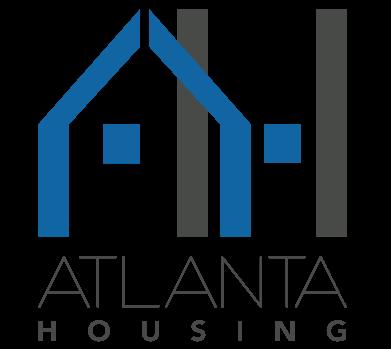
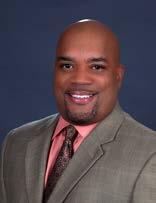
CHUCK BISHOP, HEAD OF WELLS FARGO HOME LENDING DIVERSE SEGMENTS
The housing market has shifted dramatically over the course of the last year. Even as the market evolves, the desire to own a home has remained strong. In a survey conducted this spring, 92% Black Americans agree that owning a home is a great way to build family wealth, and 69% say they want to own their home even if it doesn’t increase a lot in value.
At Wells Fargo, we believe deeply in the benefits of homeownership –from building wealth across generations to strengthening communities. We also know that systemic inequities in the United States have prevented too many minority families from achieving their homeownership and wealth building goals. As the largest bank home mortgage originator, and largest bank originator of home loans to minorities over the last decade, we believe we have a responsibility to develop solutions that help close the gap. In this homeownership supplement, we share some of what we’re doing to help advance racial equi-
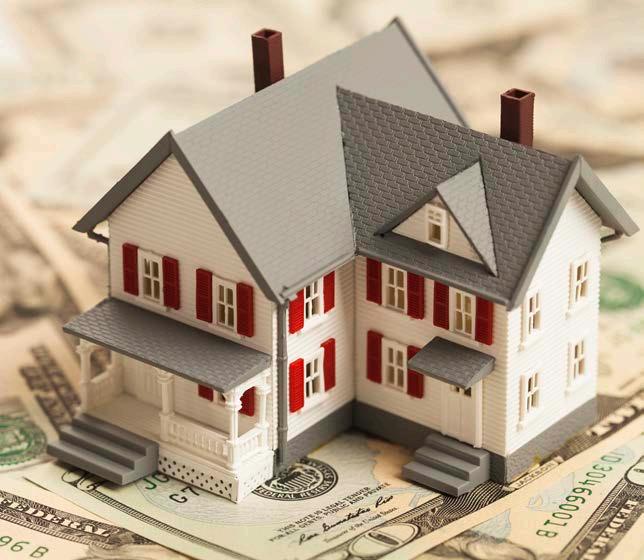
ty in homeownership. Our efforts include programs like the Dream. Plan. Home.SM mortgage, which offers low- and moderate-income families a down payment as low as 3% and supports approval of those with non-traditional credit, and
the Dream. Plan. Home. closing cost credit—currently available in eight markets—which may provide up to $5,000 towards non-recurring closing costs, making it easier for low and moderate-income families to purchase a home. We’re
also developing a Special Purpose Credit Program to help eligible minorities whose loans are serviced by Wells Fargo to benefit from refinancing and have announced $60 million in “Wealth Opportunities Restored through Homeownership” (WORTH) grants projected to support 40,000 homeowners of color. These programs add to our ongoing commitment to advance homeownership. More broadly, we’re here to help all of our customers achieve their financial goals through homeownership. We are passionate about our work because we believe in the positive impact homeownership can make for individuals, families, communities, and the nation at large.
Wherever you are in your financial journey, Wells Fargo is here to help you reach your goals. We’re proud of the role we play and eager to do all we can for our customers.

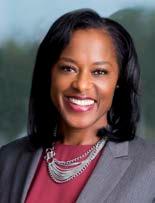
BY KRISTY FERCHO, CEO OF WELLS FARGO HOME LENDING AND CHAIRMAN OF THE MORTGAGE BANKERS ASSOCIATION
Over the past two years, home has never been more important. Safe, affordable housing has long been one of the most common aspirations for all Americans, and the principal way most families build wealth in this country. Yet obtaining this goal remains more difficult for people of color.
The racial homeownership gap is as large today as it was during the days of segregation, with the white homeownership rate roughly 30 points higher than Black households. Recent Urban Institute analysis shows that the gap may continue to grow absent intentional action. This has lasting implications: when one generation misses the wealth-building opportunities of homeownership, successive generations feel the impact as
well. For me, this is personal. As a Black woman and the Head of Wells Fargo Home Lending, I am passionate about growing Black homeownership and providing access for those shut out of the American dream.
I’m proud to have a leadership role at Wells Fargo as we take action to increase Black homeownership. We’re doing this by incorporating low-down payment financing options and closing cost credits available through offerings like our new Dream. Plan. Home. SM programs; diverse, in-market sales teams ready to provide access and support; collaboration with non-profits that understand local markets and more. These efforts are part of our $60 billion commitment to growing Black homeownership. Wells Fargo is also investing $50 million in Minority Depository Institutions to
empower diverse communities. Housing stakeholders must work together to close this gap, bringing unity to this urgent moment, and I have seen firsthand the great work underway not just by lenders, but also advocates, and policymakers. In addition to my role at Wells Fargo, I’m also the chairman of the Mortgage Bankers Association (MBA) board of directors and the leader of the affordable homeownership working group for the Office of the Comptroller of the Currency’s Project REACh, which promotes financial inclusion through greater access to credit and capital.
For the MBA, one of our goals is to drastically increase affordable homeownership in the next two years by working with member companies and policymakers to take action now. Our mission is to drive con -
sideration of policy actions focused on housing, such as firsttime homebuyer credits and FHA reforms.
Project REACh convenes stakeholders from government, financial institutions, nonprofits and more to tackle the structural barriers that have contributed to the racial homeownership gap. Removing these barriers to financial inclusion will help millions of people, previously left out of the system, gain access to more opportunities for themselves and their families.
We all have a role to play, and while none of us can break down these barriers alone, if we are united in our pursuit, we can make a huge impact together.
Read more at Wells Fargo Empowerful. (https://welcome. wf.com/empowerful/)

It’s an exciting and hopeful time, but you probably have questions too. Our My First Home® website is a great place to start.
This site was designed with your home financing needs in mind: You can check your credit score, find out your debt level, review your savings, and more with just a few clicks. Knowing where you stand financially makes it easier to plan next steps. You can also tackle any areas that might need improvement.
From start to finish, we’ll work with you. Because a home is more than just four walls. It’s where the celebration of the present meets the promise of the future.
To learn more, go to https://myfirsthome.wf.com/.
STAFF REPORT
The Black Homeownership Collaborative (BHC) will celebrate its one year anniversary June 20, at Atlanta Metropolitan State College with a day-long event featuring housing advocates, political and banking industry leaders.
The Collaborative was formed in June 2020 in Cleveland, OH, on the first federal Juneteenth Holiday. The founding members of BHC consist of Mortgage Bankers Association, NAACP, National Association of Realtors ® , National Association of Real Estate Brokers, National Fair Housing Alliance, National Housing Conference, National Urban League, and Urban Institute.
At the first meeting the BHC set a goal of increasing Black homeownership by 3 million by the year 2030.
“Since its launch, collaborative members have been convening strategic meetings and finding creative ways to collaborate toward moving us closer to our collective goal. Whether that’s taking meetings jointly with

Photo Credit:iStock/Prostock-Studio
high-ranking elected officials, drafting collective sign-on letters, convening forums, or finding ways to be involved in each other’s initiatives, the Collaborative has served as a meeting place for bold and creative thinking on advocacy,” according to a statement by the BHC.
The Collaborative picked Atlanta for its one year anniversary celebration because it feels “the metro region has the potential
to lead the nation in promoting homeownership for Black families. Research from Freddie Mac has shown that the region has one of the highest populations of mortgage-ready Black Americans in the country, making it an important opportunity to help close the racial homeownership gap.”
The event will offer strategies and solutions for local housing leaders to offer advice to the 177,000 mortgage-ready Black
millennials in Atlanta.
Key speakers at this year’s event include Ginnie Mae President Alanna McCargo; Atlanta Mayor Andre Dickens; National Urban League President Marc Morial and Mortgage Bankers Association Chairperson Kristy Fercho.
A panel focused specifically on Atlanta housing issues will feature Nancy Flake-Johnson, Urban League of Greater Atlan-
ta; Loretta Williamson, Truist Bank and Ashani O’Mard, Atlanta Neighborhood Development Partnership.
This panel will focus on the perspectives of local stakeholders and explore how the city can lead by example in engaging Black communities and offering sustainable homeownership solutions for its residents, BHC stated.
A third panel titled “The Power of Collaboration: Innovative Partnerships and National Initiatives to Close the Racial Homeownership Gap” will present the research results from various members of the Collaborative, discuss what has been learned, what is needed to understand better, and how it can work together to make progress towards their ultimate goal of 3 million new homeowners. This panel will include: Cy Richardson, National Urban League; Laurie Benner, National Fair Housing Alliance; Kristy Fercho, Wells Fargo; and Bryan Greene, National Association of REALTORS ®.
For more information go to the Black Homeownership Collaborative website at: www.3by30.org.
BRIA SUGGS, The Atlanta Voice
Through New Markets Tax Credit financing, Enterprise Community Partners (Enterprise), Atlanta Neighborhood Development Partnership (ANDP) and Westside Future Fund have committed to building or rehabilitating 45 affordable homes for low to moderate income families in Atlanta.
The project will have a focus in the city’s Westside and Southwest neighborhoods. ANDP will create 25 homes in the Campbellton Road area, while Westside Future
Fund will rehabilitate 20 homes in Vine City, English Avenue, Ashview Heights and the Atlanta University Center.
In a statement the partnering companies described the goal of the new development as “helping to expand homeownership and wealth-building opportunities in historically Black communities close to the city center that have experienced decades of disinvestment and gentrification and, more recently, disproportionate harm from COVID-19.”
“The homes are going to be affordable to families earning up to 120% of the median income,with 20% of the units set aside to families earning
at or below 80% of the median income,”Meaghan Vlkovic, Enterprise vice president and Southeast market leader, said.
“This is very important because in this model, because of the new market tax credit investment, and the public private and philanthropic partnership, it is going to allow for the sale prices to be affordable to families earning those incomes.”
The New Markets Tax Credit program was established by Congress in 2000. According to the United States Treasury, the program “permits individual and corporate taxpayers to receive a non-refundable tax credit against federal income
taxes for making equity investments in financial intermediaries known as Community Development Entities (CDEs).”
The money is then invested in low-income urban and rural communities. Racial equity is what Vlkovic described as the center of her work at Enterprise, and is what caught her interest on this project.
“The majority of the homes on the Westside are not owner occupiedthey are investor owned and getting in now to secure homes for renovation or vacant land for new production of affordable homes, it will help prevent displacement,” Vlkovic said.
John O’Callaghan, president and
CEO of ANDP, this development is an opportunity for people to create wealth within their families as well.
“So, this is really a wealth creation initiative that is particularly focused on developing wealth and among families of color,” O’Callaghan said. “And … there’s just a need across Atlanta for more homes and apartments that are affordable.”
On average, families who have used ANDP’s homeownership program have accumulated $134,000 in wealth from the value of their homes. Construction on this project has been ongoing for about a year and is expected to be complete in 2023.
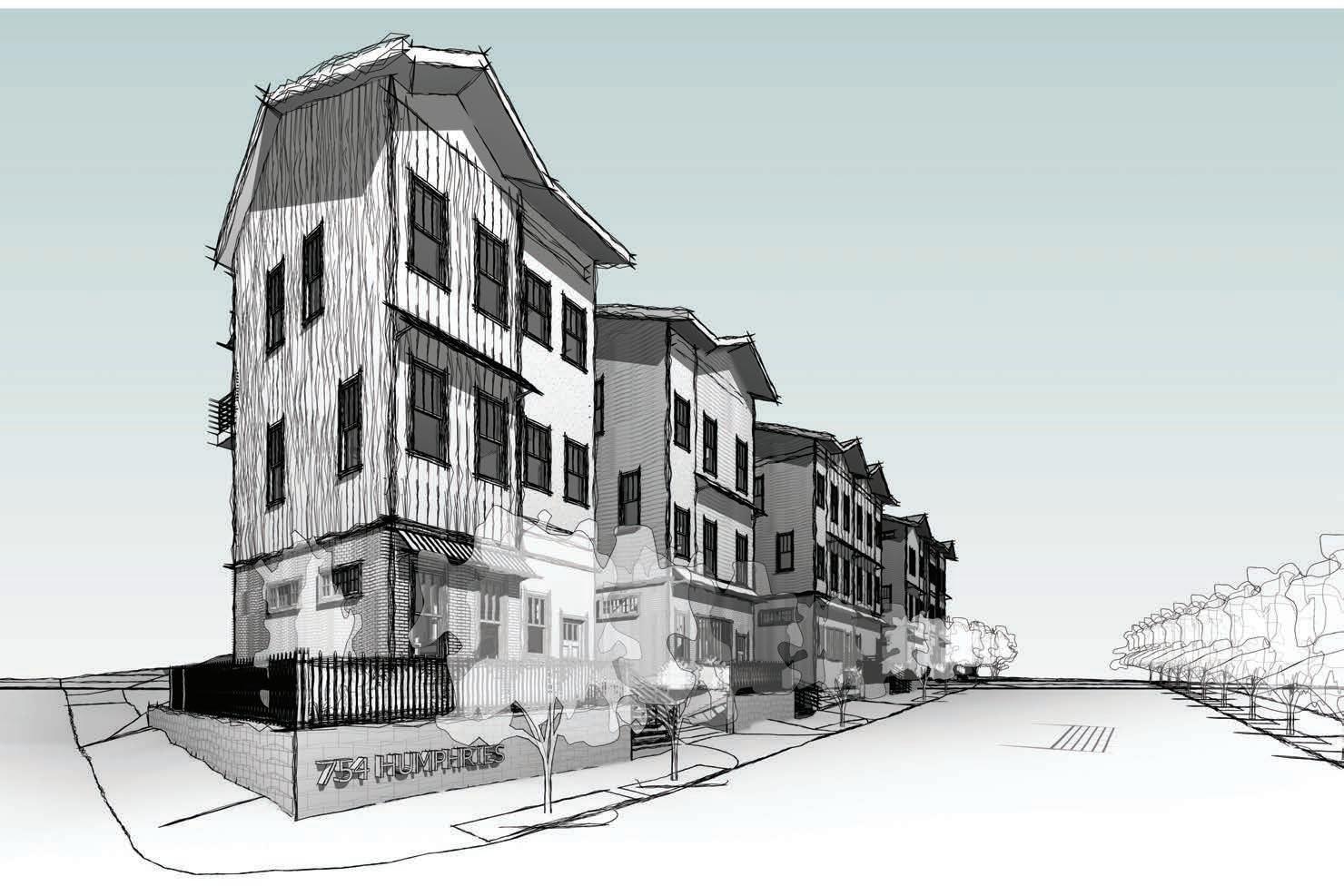




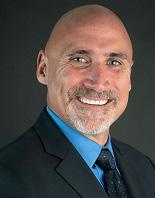
GREG MURRAY, VP OF MILITARY PROGRAMS FOR WELLS FARGO HOME LENDING
Like many Americans, the recent rise in interest rates may have you wondering whether this is still a good time to buy a home. This could be particularly true if you are a military service member who just received permanent change of station (PCS) orders and will be relocating to a new area.
To get you started, Wells Fargo Home Lending is providing these insights:
• Assess your readiness: “The decision to buy is personal. Take into account your goals and financial circumstances,” says Greg Murray, VP of Military Program for Wells Fargo who is also a veteran. “While interest rates have increased this year, if you feel financially ready, this is still a great time to look.” Take advantage of free on-line tools such as the one
available at www.handsonbanking.com/military to better understand baseline concepts on savings and credit.
If you decide to move forward, it’s important to be realistic about what you can afford, and having a rainy day fund to fall back on is a good sign of your readiness. Don’t overextend yourself in buying. Leave yourself with the ability to weather economic cycles and afford run-of-the-mill expenses for home repairs and updates.
• Build your team: Enlist the help of a home mortgage consultant who can help you navigate the process, as well as discuss financing options that fit your needs. This is especially true for military and veteran homebuyers. “A military lending specialist can help you make the most of the home loan benefits you’ve earned,” says Murray. “Consider working with a lend-
er who understands the options available to military families.”
• Know your down payment options: Not all financing options require you to put 20 percent down. For military service members and veterans, VA loans provide lowand no-down payment options for qualified borrowers, and do not require monthly mortgage insurance. Other low down payment options to explore include Wells Fargo’s Dream. Plan. Home.SM, as well as FHA and rural lending programs. However, understand that more money down could reduce your monthly payments and interest paid over the life of the loan, and may also eliminate the need for private mortgage insurance or reduce your funding fee on a VA loan.
• Leverage digital tools: While a recent realtor.com survey indicates that 63.6% of consumers looking for a home want to see a property in
person before buying, many start the hunt online, and now you have better opportunities to do so. And once you’ve found a property, lenders like Wells Fargo offer time-tested digital tools allowing you to handle many aspects of the loan process remotely, including signing disclosures, uploading documents and simply getting started. So far in 2022, 68% of Wells Fargo’s VA applications came through the online mortgage application. To contact a home mortgage consultant, visit wellsfargo.com/military. To access free resources that can help you be a savvier home shopper, spend some time with Wells Fargo’s educational page, myfirsthome.wellsfargobank.com. For military personnel and veterans especially, rest easy in knowing that you have access to many resources that can make the home buying process a smooth one.

BY EWUNIKE BRADY VP, WELLS FARGO HOME LENDING
AFRICAN AMERICAN
SEGMENT STRATEGY
LEADER
It’s been quite a year for families seeking to buy a home. Interest rates are up, available housing supply is down, and when it comes to finding the perfect home, competition is fierce.
Factors like these can make the process of buying a home seem daunting in any market – and those pressures can feel even more pronounced within minority communities where systemic barriers have made it more difficult to achieve and sustain homeownership. But a tough housing market doesn’t mean the dream of homeownership is out of reach – or that the benefits of owning a home are any less significant. When it comes to achieving your financial goals via homeownership in this housing market, time spent planning and preparing can give potential homebuyers a big leg up when the time comes to make an offer on that perfect home.
A few simple steps can help would-be homebuyers navi-
gate the challenges presented by today’s market.
First, take time to think about what you want – and what you need – out of a home, especially given how our individual perceptions of “home” have evolved over the last two years. In a market as competitive as today’s, it’s important to know ahead of time where you’re willing to make tradeoffs and where you’re not. If you’re a remote worker, maybe space for a home office is more important than proximity to a corporate office. Maybe your pandemic puppy is growing and needs more space, so a nice yard takes precedence over walkable restaurants.
Understanding the difference between “nice to have” and “need to have” has always been important. In today’s market, it’s essential to know where you stand before you look.
Next, it’s crucial to know ahead of time what you can afford and have a plan for financing. While it may seem
like a no-brainer in any market, the current environment is so competitive that those without a strong understanding of their budget – and ideally pre-approval from a mortgage lender – may be at a disadvantage when bidding for their dream home.
Homes for sale are often flooded with interest within days of being listed, and it’s becoming increasingly common to see all-cash buyers swoop in with an offer above the asking price. Taking the time now to establish your budget, determine how much wiggle room you have, and begin the process of securing pre-approval can provide buyers a serious head start when the perfect house comes along.
Finally, as you work with a lender to seek pre-approval, make sure to ask lots of questions and have a detailed discussion about your goals and your current financial situation. Your mortgage lender may be able to share information about programs that could
help you bring your goals closer to reality through programs that help address some of the factors that can make homeownership seem less unattainable to some potential homebuyers.
At Wells Fargo, for instance, Home Mortgage Consultants can provide information about programs like the Dream. Plan. Home.SM mortgage, which offers low- and moderate-income families a down payment as low as 3% and supports approval of those with non-traditional credit. The Dream. Plan. Home. closing cost credit—currently available in eight markets—may provide up to $5,000 towards non-recurring closing costs making it easier for low- and moderate-income families to purchase a home. Programs like these can make a real difference for eligible homebuyers. They can also play a role in helping to address some of the systemic inequities that have prevented too many minority families from achieving their home-
ownership and wealth building goals.
As the largest bank home mortgage originator, and largest bank originator of home loans to minorities over the last decade, we at Wells Fargo believe we have a responsibility to develop solutions that help advance racial equity in homeownership. That’s why, in addition to programs like Dream. Plan. Home., we’re also launching a Special Purpose Credit Program intended to help eligible minority customers whose mortgages are serviced by Wells Fargo to refinance.
Wherever you are on your financial journey, it pays to be prepared. That goes double in today’s tight housing market. If you’re ready to take the next step, make sure to take the time up front to determine your needs, establish your budget, and understand the programs that could help make the dream of homeownership a reality for you.
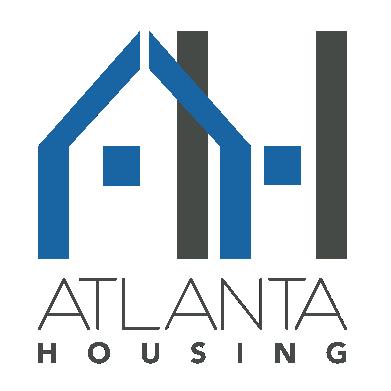

Since the program’s inception, AH has assisted 1600+ firsttime workforce home buyers and has provided over $30 million in DPA funding.
1600+ $25K*
Up to $20,000 for eligible homebuyers and up to $25,000 for eligible voucher participants, veterans, and education, healthcare, and public safety professionals
261
$5.6M $4.3M OVER OVER FUNDED FUNDED
Provides eligible homebuyers with down payment assistance to purchase homes in the city of Atlanta SCAN FOR PROGRAM INFORMATION AND ELIGIBILITY GUIDELINES
OR visit https://www.atlantahousing.org/housingprograms/down-payment-assistance/
JENNINE HUNTER,
NMLS# 1780411
ucbi.com/team/jennine-hunter
AVP, Mortgage Loan Originator
Rising mortgage interest rates and increasing inflation are making homeownership more challenging for many in underserved communities. Surging home prices and property taxes have forced many first-time homebuyers to remain renters, delaying their goal of building generational wealth for themselves and their children through homeownership.
Financial literacy is key to making the transition from renter to homeowner in the current environment. The basics of financial literacy include credit, checking and savings accounts, insurance, and budgeting. It is important to have credit, but it’s even more important to understand how to utilize it as a tool to build wealth. Defined savings habits make a difference for homeownership and in preparing your family for unexpected job loss, health challenges, income loss, or home repairs. Insurance is important to protect your assets in the case of short-term illness or death. A budget is necessary to help repair credit, save for a down payment and closing costs, and participate in the cash programs offered in today’s market. Homebuyer education is important as well. Going to homebuyer education courses will allow you to gain knowledge about the home buying process and what to expect from your realtor and mortgage loan originator.¹
As we journey towards June and Homeownership Month, there is still an opportunity to purchase. But it takes patience and resilience to be successful in a competitive housing market, along with an expert team that can guide you through the home buying process from pre-qualification to closing. United Community Bank has a loan program
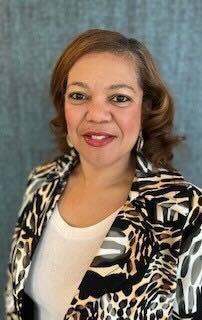
called PATH—Possibilities Achieved Through Homeownership. This program allows for 100% financing at an affordable rate with no mortgage insurance, increasing your purchasing power to compete and win in this market.² Give me a call and let us get you onto the “Path” to owning a home and building generational wealth for your family.
Equal Housing Lender. | Member FDIC © 2022. United Community Bank | NMLS# 421841 | ucbi.com/mortgage | United Community Mortgage Services in the mortgage lending division of United Community Bank. We are an approved seller/servicer for the Federal National Mortgage Association (Fannie Mae) and the Federal Home Mortgage Corporation (Freddie Mac). Normal credit criteria apply. This is not a commitment to lend. This is an advertisement. ¹Informational only; consult insurance, tax, legal, real estate, and/ or accounting advisors before engaging in any transaction. ²Restrictions apply. Not all borrowers will qualify. PATH loan geographic eligibility is restricted to the states where United Community Bank is located and for qualified assessment areas within each state. Certain property types are ineligible. Other restrictions may apply.

the first step. Learn more about our down payment and closing cost assistance options at
Member FDIC. © 2022 United Community Bank | NMLS #421841 | United Community Bank Mortgage services is the mortgage lending division of United Community Bank. We are an approved seller/servicer for the Federal National Mortgage Association (Fannie Mae) and the Federal Home Mortgage Corporation (Freddie Mac). Normal credit criteria apply. Not all borrowers will qualify. This is not a commitment to lend. Subject to normal credit underwriting criteria. Offer subject to change without notice.


If Black home and land ownership rates don’t increase, the racial wealth gap will continue to grow.

JANIS L. WARE PUBLISHER, THE ATLANTA VOICE
Growing up in the segregated south, family was my world. And that extension of my family included neighbors, teachers, administrators, and preachers. These individuals were my influencers.
They guided our paths and directed the way for us to be the best individuals we could be. They loved us when we needed it and admonished us when we were out of line. It was all fair game. After all, we were a family.
I grew up in a neighborhood where people owned their own homes. They were small houses, and the residents took pride in their homes and the community. While growing up I frequently heard my family members — both actual and figurative — repeatedly say that you need to own a piece of God’s green earth. That was the goal, to own your piece of the “American Dream.”
The house we lived in had six rooms (including two rooms that were used only for special occasions: the living room and dining room). Reflecting back on those times, it gives me pause at the thought that those two rooms were named for things in our everyday life, but they were spaces that were reserved for guests and special occasions.
One of my professors at the University of Georgia would often state “you should return home, get a job, and after a year get your own place.”
At 22, I had the fortunate opportunity to purchase a small townhouse with mortgage payments of $125 a month. This payment was less than rental rates at that time .The optimum word in this example is OPPORTUNITY! The right place, and the right time presented itself, and I was prepared to own my slice of the “American Dream.”
When I say prepared, I mean being gainfully employed, having savings for unforeseen opportunities, and establishing great credit. There were other obstacles that

we faced during those years: segregation and racism. Those closed doors ensured intentionally (or unintentionally) that we had money saved and available for bigger purchases that would have a return on investment when the opportunity presented itself. It was a slow process. Immediate gratification was not something that was easily available to our people at the time. Today it feels more like the “American Dream” has changed.
The same obstacles that we, Black Americans, faced during the 50’s, 60’s, 70’s and 80’s, for example, are not as prevalent today. Less than 50% of Black Americans own their homes (44.1%) compared with 74.5% of white Americans, according to the U.S. Census Bureau (2020).
In 1960, during the great migration of Black Americans from the south to cities like Detroit and New York City. The opportunity to work in the automobile industry led many to plant roots in the Midwest and purchase homes. My brother-in-law, Frank Washington, has completed the research and written a forthcoming book, “Blacks and Cars” that categorizes pros-
perity . Today, the homeownership rate among Black Americans in Metro Detroit is just 42%, still under the national average.
The transfer of wealth has dropped with each generation. It will only continue to drop if Black home and land ownership rates don’t increase soon.
The “American Dream” can’t just be to have nice things, drive luxury cars, travel to nice places, or eat at high priced restaurants. It must return, ever so slightly, to having a place to call home where you can own a piece of God’s Green earth.
The value of all these items diminishes as soon as you walk out the door or drive off the lot. What has not receded in value is the home.
Using my native Atlanta as an example, the housing market here has blown up. The average price of a home in metro Atlanta, which consists of 13 counties north and south of the city center, is just over $390,000, according to Zillow.com.
Nationally, CNN Business reported in February that home prices across the country have jumped 30% since 2019, and half of homes on the market are priced so that a
buyer needs to earn a minimum of $100,000. However, only 20% of Black households earn that much.
The nation’s population and average income have increased, and our consumption of goods and services has also increased, thus simultaneously devaluing that income. However, these obstacles do not mean we should stop saving and give up on the dream of home ownership.
Let's rethink how the death of the American Dream translates to lack and limitations for our people, our children, and our children’s children. Let's reconstitute the plan by working together.
For example, if we know that Black people carry a larger student loan debt burden — a median of $45,000 — which makes it difficult to save for a down payment, we can encourage our youth to take advantage of dual enrollment programs. These programs afford our young people the opportunity to take college courses at technical colleges or community colleges. This is common in Georgia where I live as well as in other school districts nationwide.
Students, during their junior and senior years of high school, can take college courses at no additional cost to the parents or guardians. Some programs will even allow students to complete the programs and transition to full time employment.
Let’s encourage students that aren’t interested in attending traditional college to visit technical colleges where jobs and career paths await them which could include starting their own businesses — which could get them into the earnings bracket the need to be in to afford a home. These options can change the trajectory of their lives.
Let’s take responsibility for our own resources with the aim of saving more and spending less. Enjoy yourself, but remember operating within an established budget is crucial. The return of “The American Dream” depends on it.
BY MAYA SRIKRISHNAN
The Washington Informer
Many consider homeownership a symbol of the “American Dream” — one of the building blocks to grow your wealth.
It doesn’t work the same way for everyone, though.
Research has shown that, for decades, homes in predominantly Black neighborhoods have been appraised at lower values than those in majority-white neighborhoods, even when comparing similar houses in neighborhoods with similar socioeconomic status. That means homes don’t build wealth for many Black owners to the extent they do for white owners.
“The value of our home touches on so many policies,” said Andre Perry, a senior fellow at the Brookings Institution who studies property appraisal bias. “It touches everything from the ways schools are financed to the personal wealth that people accrue. It touches municipal services. It’s an important lever in so many other areas of our
lives besides homeownership.”
Perry’s research found that in Black communities, homes are underpriced by about 23%, resulting in an estimated $156 billion in lost equity in those communities. The Biden administration created an interagency task force last year to evaluate the cause and consequences of this appraisal bias, measure the extent of the issue and propose steps to address it. In March, the task force released a Property Appraisal and Valuation Equity action plan.
That report laid out 21 recommendations, including making appraisal data more transparent and available to researchers, empowering consumers to better understand and report appraisal bias, diversifying the appraisal workforce and expanding regulatory examination of mortgage lenders to look for appraisal bias.
Perry said the PAVE action plan, which points to his research on multiple occasions, is a good first step in addressing what he calls “the architecture of inequality” in the housing market. And sociologist Junia Howell, whose studies
on property appraisal disparities with fellow researcher Elizabeth Korver-Glenn were also cited in the PAVE report, said it’s a big deal to have the federal government acknowledge its role in appraisal bias and dedicate resources to study and address the issue.
But the researchers say there’s an underlying issue everyone needs to grapple with:
“All value is socially constructed,” Perry said.
Howell said that was her main criticism of the PAVE plan.
“There’s a deep assumption that there is some kind of real value and that people of color are missing out,” Howell said.
But the reality is that no true, fair housing market exists. How we value homes and neighborhoods is entirely subjective, dependent on biases embedded in society and in the housing systems we’ve built. If we start with the assumption that a fair housing market exists and the problem is that some people can’t access it, that allows the federal government to focus on individual solutions, rather than reckoning with bigger questions and issues,
Your home is out there. A down payment as low as 3% on a fixedrate loan could help you finance it.
Each day, the sun rises on streets of houses. Neighbors wave to each other, people head off to work and school, new owners pull up to the home they’ve worked hard to buy. More than just buildings, homes are at the heart of a community.
With Wells Fargo, you may be eligible for a range of home financing options, including low down payment loans, to help you reach your homeownership goals. Talk with a home mortgage consultant about loan amount, type of loan, property type, income, first-time homebuyer programs, and homebuyer education requirements to ensure eligibility.
Having low down payment options does require mortgage insurance — an option that increases the cost of the loan and monthly payment. We’ll work together to find the loan that’s right for you.
To learn more, call 1-877-937-9357 or visit www.wellsfargo.com/mortgage.
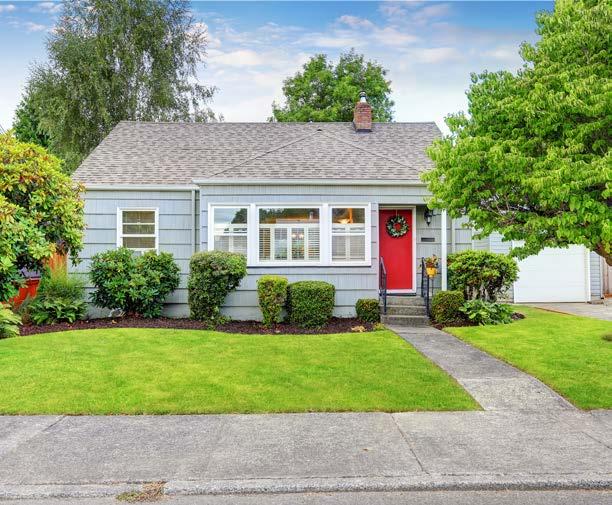
Howell said. That’s a lot of what the PAVE plan did, she said.
For instance: The action plan called for diversifying the appraisal industry, which is overwhelmingly white and male. While both Perry and Howell support that effort, they say it can do only so much without other systemic fixes.
“If you have a diverse appraisal workforce and they use the same practices, you still may get similar results,” Perry said.
Appraisers use a comparison approach, where they use prices of comparable homes in comparable neighborhoods to determine the value of the home they’re appraising.
As part of Howell’s research, she followed appraisers on the job. She found they would always pull comparable sales from neighborhoods that were racially similar to the
See VALUE on page 22

ITORO UMONTUEN
The Urban League of Greater Atlanta at its core is a civil rights organization. The President and CEO, Nancy Flake Johnson, has fought for affordable housing, equity in lending and voting rights. In an interview with Chief Brand Officer, Dawn Montgomery, Johnson described the nature and scope of her work.
“Our whole focus is to advance African Americans economically. And we do that through a number of holistic approaches,” Johnson said. “People need housing, they need education, they need the skill sets to be able to plug into today’s economy, and make livable wage jobs. And unfortunately, technology and the economy.
And then on top of that, the pandemic and the recession really have created a perfect storm where the need for skills rapidly accelerated far past our ability to keep people current. And so you add on the pandemic, where many individuals without skills have service running jobs, where they’re the lowest paid, and they don’t get paid if they don’t show up. So it’s now really a window of opportunity for people to tap into what their interests are, and we help them map that against this metro area and statewide economy.”
The City of Atlanta has one of the most highly publicized wealth gaps in the United States. According to AtlantaWealthBuilding.org, 70% of Black Atlantans are liquid asset poor, meaning those individuals in that
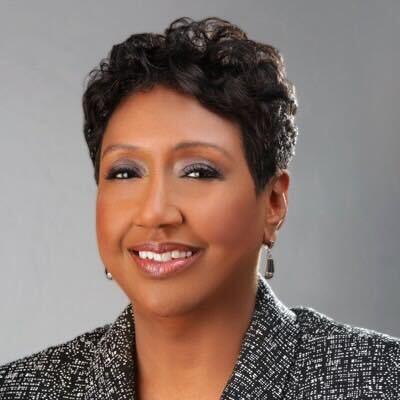
category do not possess items such as bonds, cash, stocks. Conversely, only 22% of Atlanta’s White residents have this issue.
In her interview, Johnson addressed this harrowing dynamic in the post-COVID world.
“So what we’ve got is a tale of two cities, a tale of two states,” Johnson said. “And so Urban League sees ourselves in the middle, our job is to connect with the people who are thriving, and support them to connect with these opportunities, right that are there for them.
So it means education for all and it always comes back to that. But to get to education, you have to have a safe roof, you have to have your
basic needs met, because you kind of focus right in order to strive and move forward. And there’s just a lot of families totally, totally unstable right now.”
Johnson recently proposed a $500 a livable wage for certain Atlantans that meet the following qualifications:
•Live in the City of Atlanta
•Be willing to participate in research
•Income up to 200% of the federal poverty level.
•Single without children make up to $25K
• Family of four making up to $53K
To sign-up for consideration in the program, go to: www.ulgacoaimpact.org.
Johnson said the work the Urban League of Greater Atlanta performs is people-driven and they need volunteers who can help bridge the gap and connect those in need with valuable services to get them current and competitive in our city with its dynamic marketplace.
“It’s all about career pathways and small business development,” Johnson said. “We need instructors, we need mentors, we need capital, we need donations, we need all of those things, people and companies and the government. And then we teach people how to manage their money, understand credit and build wealth. There are so many
people that have that talent that know how to counsel people on budgeting, and credit score.
And then last but not least, as we make sure everyone understands the importance of civic engagement, and how that’s more than voting for the President of the United States, or even the Senator. We got to vote up and down, politics are local and the people in the seats matter.”
Johnson is planning a transition after fourteen years at the helm of the Urban League of Greater Atlanta. She promises to leave the organization in a better place than she found it. Before she departs, Johnson is working on creating a financial assistance plan for Atlantans that reside on the margins of our community.
“This housing issue has really touched us,” Johnson explained. “We got into the emergency financial assistance business at the very beginning of the pandemic, because we knew the main thing people needed was help with paying bills, rent, and car notes.”
Johnson went on to say she would like to build a farm as well as a Financial Empowerment Center. The Urban League of Atlanta has raised $2.5 million so far and they have another $4 million coming from various sources, according to Johnson.
“ That’s what we are now, and I would like transitional housing, 24 hour daycare, and opportunities for people to upskill attached to it,” Johnson added. “I want our people to be supported every single minute of the day. So that’s my vision.”
Continued from page 20
homeowners’ area, even when typical incomes in the neighborhoods were sharply different. She said appraisers exercised their discretion more often for white homeowners than Black homeowners in ways that increased values, such as when deciding whether to include or exclude a higher-priced previous sale.
Comparing sales to determine value, no matter how carefully it’s done, is fraught because of the country’s long history of redlining and other discriminato -
ry housing practices.
“If you compare homes to others in a neighborhood that’s been discriminated against, you effectively recycle discrimination over and over again,” Perry said.
Perry is working with Brookings and Ashoka’s Economic Architecture Project to seek out new innovative approaches to solve housing devaluation.
Howell said she advocates for a completely new system, though she thinks there are plenty of things the federal government can do to standardize the current one while it figures out a better way. Officials could change appraiser forms — what the profes-
sion uses to determine value — or require comparisons to similar houses from neighborhoods with different racial demographics. They could also create standards for adding and subtracting value for features, like decks, where current practice is inconsistent.
But at the same time, both researchers said, something needs to be done to help the consumers whose wealth has been negatively impacted by inequities in appraisals.
“It’s just not enough to say, ‘Hey, you’ve been discriminated against,’” Perry said. “Can we restore the value that’s been lost?”
Howell said she supports repa-
rations in the form of giving property to people and reassigning values that are low as a result of discrimination. But she said other, more politically palatable options include zero-interest mortgages or progressive mortgages, where people with less income or wealth would have lower interest rates.
The PAVE task force had about eight months to put together the report, Howell noted, so she understands why much of the plan involves promises to investigate issues and potential solutions, rather than proposing agency actions and legislation that would represent concrete steps forward.
But she emphasized that many of the ideas she and others have proposed are already within the power of an administration to see through.
“We have to deal with the fact that we’ve allowed certain communities to accumulate more wealth than others,” she said. “But even if we can’t get there, there are ways in our current mechanisms within [the Department of Housing and Urban Development], within the Federal Reserve, within the secondary housing market to begin reversing these decades of very explicit inequality and the growing racial wealth gap.”
DR. SOPHIA SPARKS Washington Informer Staff Writer
Each year, housing conditions in the U.S. are implicated in thousands of deaths and hundreds of thousands of illnesses and injuries requiring medical attention, according to the Centers for Disease Control and Prevention (CDC). Negative health outcomes have been linked to the hazardous conditions in homes across the nation in studies since the 1980s. Americans spent up to 50 percent of their time within their homes, before the pandemic, making the overall safety of the home a critical component to good health.
Home hazards have been linked to a variety of negative health outcomes. Mold and volatile organic compounds have been linked to respiratory tract infections, asthma, and asthma morbidity. Radon has been linked to cancer and death. Extreme weather has also led to the exacerbation of existing respiratory and heart ailments as well as to death. Each of these illnesses can manifest from neglected or abused household appliances, HVAC (heating, ventilation, and air conditioning) systems, and from within older homes where unregulated materials were used in their construction.
The Housing Health and Safety Rating System (HHSRS) provides a method of grading the severity of threats to health and safety in homes. The inspection process considers the effect on occupant health of any hazards in the property. Hazards are rated according

to how serious they are and the effect they are having, or could have, on the occupants, that is, “the effect of the defect.”
The U.S. Department of Housing and Urban Development’s (HUD) Office of Lead Hazard Control and Healthy Homes (OLHCHH) began training its Healthy Homes program grantees to use the Healthy Housing Health and Safety Rating System (HHSRS), a tool designed in the United Kingdom, to justify intervention decisions to correct identified residential health and safety hazards. Both the British and U.S. versions assess 29 housing
hazards that pose risks to health or safety -- grouped into four categories determined by their characteristics: physiological, psychological, infection, and accidental hazards.. Each of the 29 hazards are assessed separately and weighted according to likelihood of occurrence and the possible outcomes should the hazard result in harm.
The assessment process not only spots defects, but also takes a risk assessment of outcomes and effects. For instance, if old windows in poor condition are assessed as a hazard, it can contribute to excessive cold as well as damp and
mold., and be a contributor to excessive noise pollution, entry by intruders, or falls between levels. A single deficiency, then, can produce more than one hazard and impact the score.
The likelihood and severity of a hazard causing harm is tabulated using the rubric: Extreme (Scoring of 10,000) in which the hazard can cause death, lung cancer, mesothelioma, paralysis, 80 percent burn Injuries; Severe (Scoring of 1000) in which cardio respiratory disease, Legionnaires, fractures, burns, or loss of consciousness can occur; Serious (Scoring
300)in which eye disorders, hypertension, parasitic dermatitis, vomiting, strain or sprain injuries can occur; and Moderate (Scoring of 10) in which severe discomfort, slight confusion, moderate cuts, bruising, regular serious coughs and colds, occur.
“The U.S. system is designed to monitor the impact of insidious conditions within a home on the overall health of the residents. In addition to checking for the existence of mold and dampness, HHRS checks for hazards that could cause serious injury or death from caustic agents like carbon monoxide and asbestos,” real estate agent Priscilla Whelan told the Informer. “As a property owner the cost can be great to make repairs; however, the cheap comes out expensive when hazards are not remedied. The goal is also to ensure that homes are not ‘sick buildings’ that cause serious health problems.”
Studies conducted by the Home Safety Council have associated toxins such as lead paint in the home to lead poisoning and lower IQs, learning disorders, criminal activity, and hormonal deficiencies. Similarly, other toxins like carbon monoxide have led to neurotoxicity, coma, and death.
“Our homes are supposed to be places of great comfort and joy, but when those spaces hide hazards, the dream home can turn quickly into a nightmare,” Whelan noted. “There will always be some level of hazard in any indoor space, but the rating system helps minimize the potential of injury and death from those hazards.”
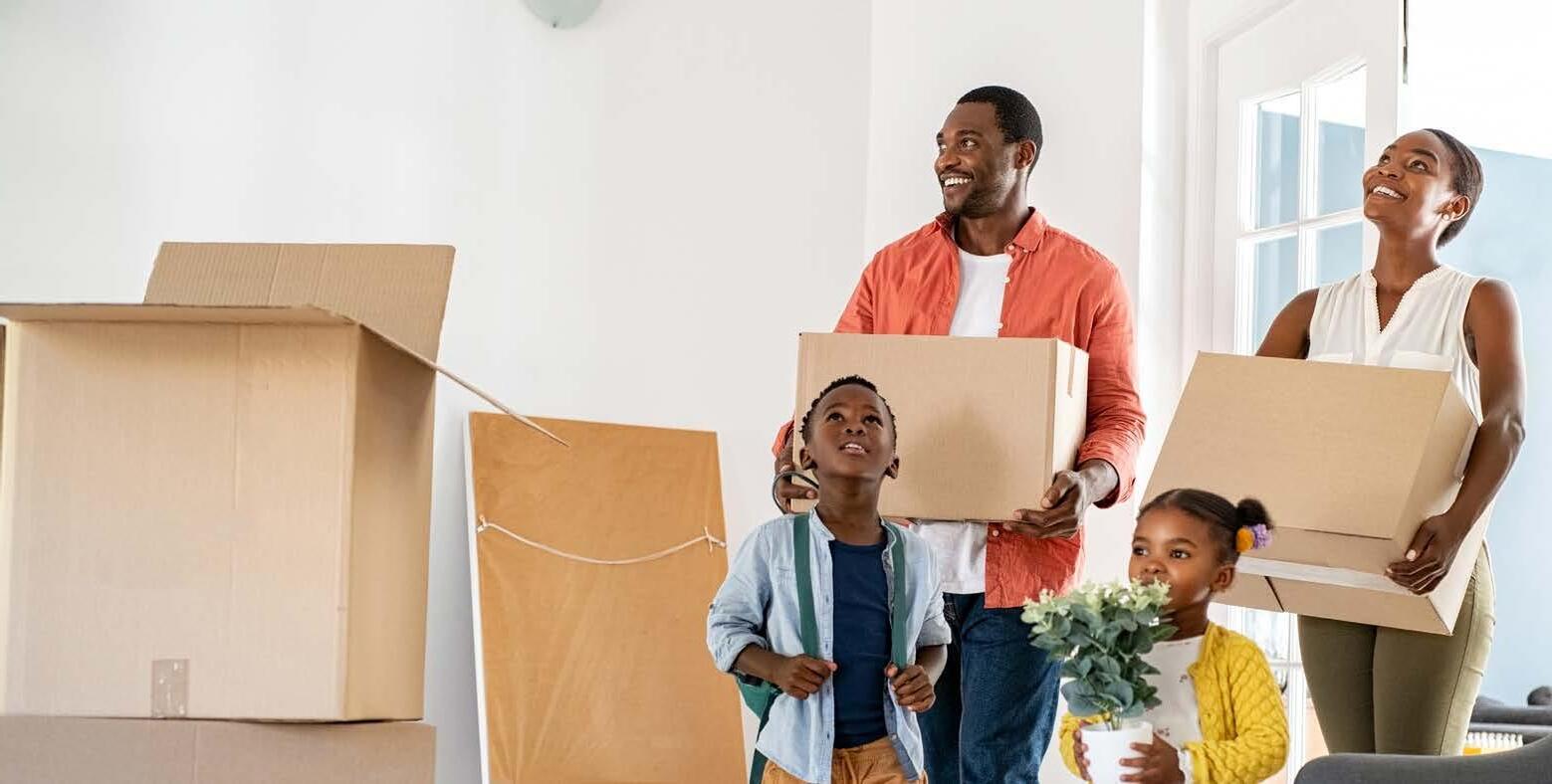
If you want to learn more, visit SouthStateBank.com/Homebuying101 for articles, infographics, calculators and more. Our bankers at SouthState are ready to answer any questions you have and help guide you with the products and services you may need to achieve your goals.
Buying a home is one of the largest investments and one of the most important decisions you’ll ever make. If you are renting now, use this time to save money for a down payment, pay down debts, build a good payment history and spend time researching where you may want to live when you do purchase a home.
Access to helpful tools is very important as you prepare to buy a house. Your overall credit profile is an important part of qualifying for a mortgage. You can get your score for free at FreeCreditReport.com. An online mortgage calculator can give you perspective on the costs that may be included in your monthly mortgage payment that should be considered when determining what housing price is affordable to you.
During this step, you’ll be providing all your financial information as well as information about the property you wish to purchase. Get organized. Take time to gather the needed paperwork like proof of income, tax returns, recent bank statements, resident history, and other financial and asset documents.
Your lender is responsible for moving your application through underwriting, is your contact for any questions and will schedule your property appraisal and your closing. Feel free to ask them questions about your application, required paperwork, the status of your loan, how to prepare for your closing and any other questions you have during the loan process.
After you’ve received final loan approval, it’s time to schedule your closing. Your lender will work with you to set a date and time convenient for all parties. At the closing, you will sign final documents, get your keys, and pay your down payment and closing costs.
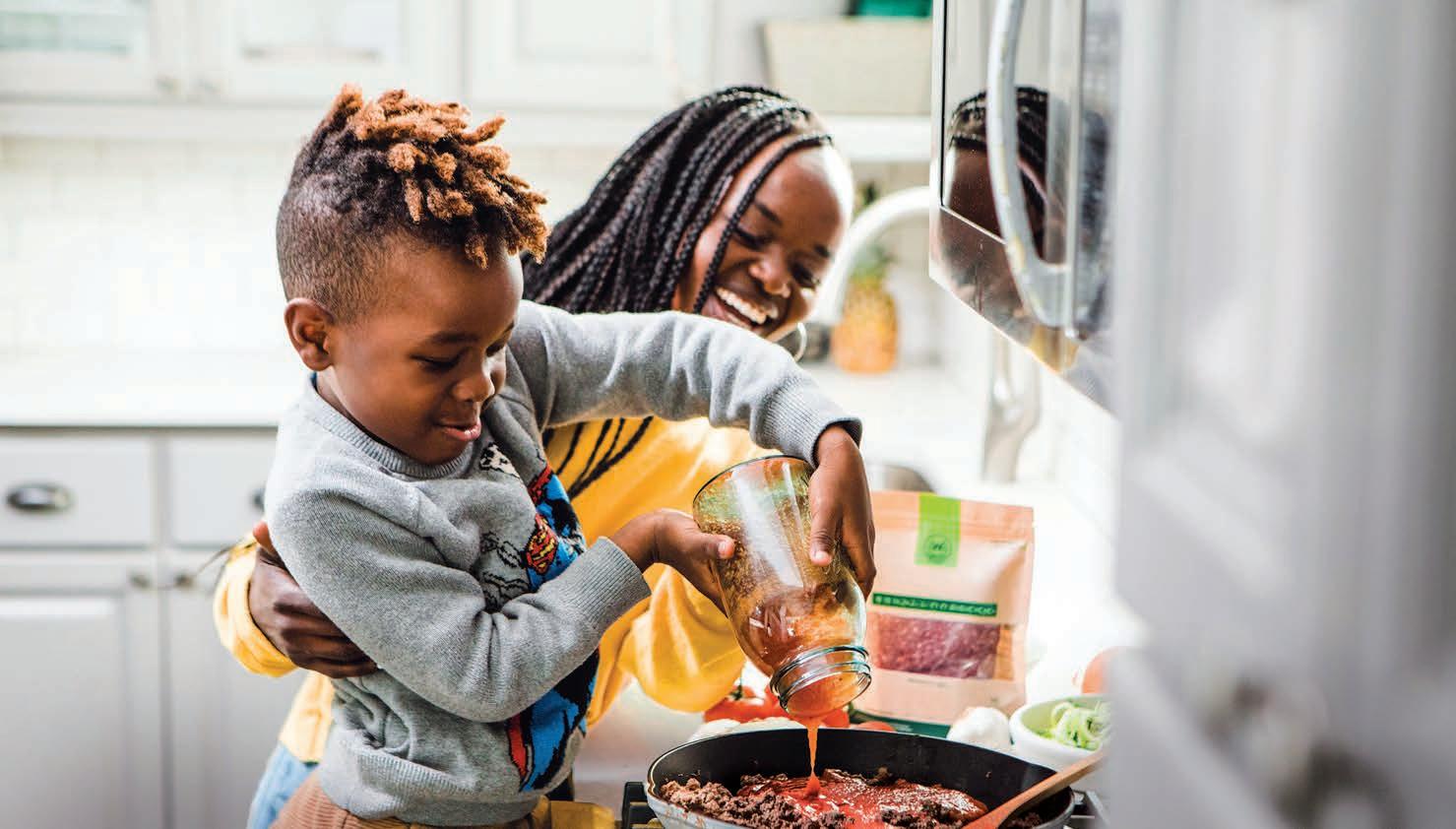
options and support you nee d.
Specialized programs
homebuyers, newly constructed homes, union members, employees of participating companies, military, or others.
Reliable preapproval
monthly payment, and interest rate.1
Complete your application, manage tasks, and check the status online. Some features of the online application are not available with all loans. Talk to me for details.